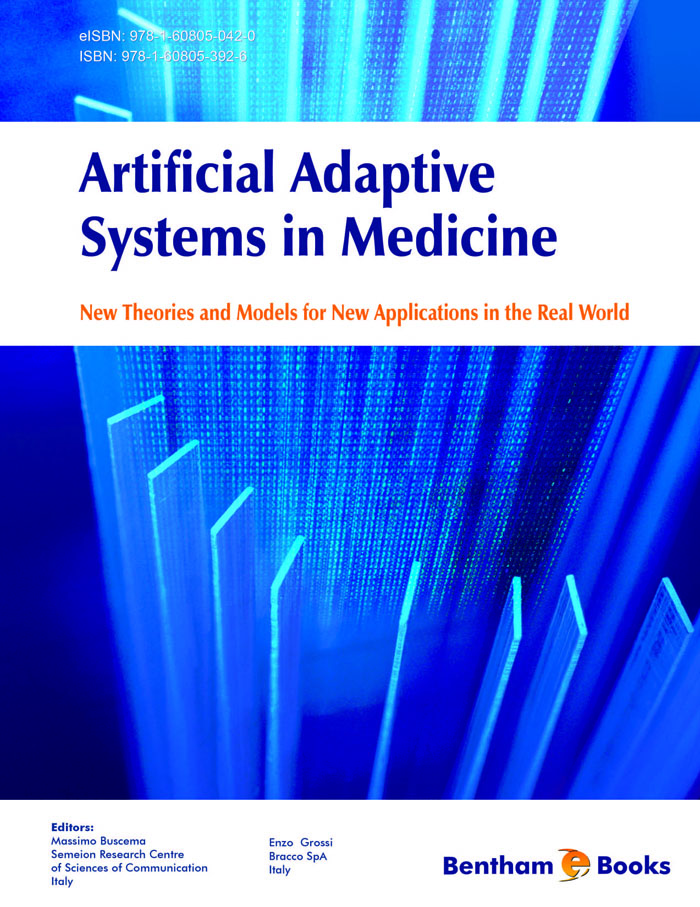The application of medicine by physicians is commonly referred to as the practice of medicine, and it is a discipline that requires one to blend both art and science to the diagnosis and treatment of the disease. While science is used to measure the physical aspects of the body (analyze blood, view X-rays, see visualizations of the heart, and the like), art is used to creatively assemble a myriad of seemingly disparate symptoms into a diagnosis that lends itself to treatment. The traditional study of medicine is changing, for with the onset of computer technology and the rise of sophisticated, and very complex, programs the typical physician has the availability of a huge reservoir of analytical power at his/her disposal.
Mathematics is increasingly becoming the major player in medical analysis and diagnosis in large part due to the explosion of collected data and the concomitant need for timely analyses. The use of computers has opened the floodgates to methods of data collection that were impossible just a decade ago, but computers are also responsible for permitting computationally intensive medical analyses that are in their infancy; this is sometimes called mathematical medicine. Efforts are being made to organize and describe data in more visually understandable ways by replacing verbal explanations with predictive or retrodictive models. Complicating these activities is the recognition that data can form together into systems that were therefore unknown; they are dynamic as data relationships change to produce emergent systemsthat contain emergent propertiesand perhaps are now in need of emergent diagnoses. It is mathematics that permits the crossing of space and time to see and study these new emergent systems.
Some few decades ago there was much hype about the use of computers in creating artificial intelligence, and the science of artificial neural networks (ANN) was born. For the most part the interest has waned, but there remain a limited pool of researchers who use ANN with excellent results. Perhaps one problem is that the use of ANN requires a level of mathematical maturity that is lacking in a very large percentage of the post-Baccalaureate community that extends into the medical community. An effort was made at the North American Fuzzy Information Processing Society (NAFIPS) Conference held at Rockefeller University in New York City in 2008 to bring some of the newest and most exciting advances in mathematical medicine to the forefront of the fuzzy systems community of scholars, as they are a subset positioned in Universities and comfortable with complex mathematics and could help expand the need for mathematical reform in academic curricula to non-traditional areas.
A team of scholars from the Semeion Research Centre in Rome, Italy, under the direction of the Centre’s Director, Prof. Dr. Massimo Buscema, and medical researcher, Dr. Enzo Grossi, were invited to participate at NAFIPS, and Dr. Buscema was also invited to be a Plenary Speaker. At the conclusion of the conference it was conspicuously obvious to all that the advances of artificial adaptive systems applied directly to the medical community were breathtaking. More to the point, their research has opened up the opportunity to apply these proven techniques to other disciplines with the promise of a substantial contribution to science.
The research presented at the conference, and also presented in this book, deals with the identification of emergent properties of complex medical systems, features that are hidden from traditional view, but important to the physician and medical researchers. Here one will find four artificial adaptive systems worthy of intensive study for the specialist, fascinating for the academic generalist, and inspiring for the basic reader:
-
An artificial adaptive system called the Auto-Contractive Map, able to project a dataset onto a weighted graph yielding connections that show non-linear, or hidden, relationships that exist among the data.
-
An
Active Connection Matrix, designated the
J-Net, that can elicit medical images from digitized matrices of data that are otherwise invisible to the physician. One example is the analysis of X-rays to identify future nodes that cannot be immediately identified by a Radiologist.
-
An analytical method known as the
Topological Weighted Centroid(TWC) can read the semantics of a set of points distributed over a 2- or 3-dimensional space and approximate the point of origin of an epidemic and its consequent migration.
-
A new system of analysis capable of detecting the invariants from a multi-sequence of signals over time is called
Implicit Function as SquashingTime (IFAST). IFAST is shown to be an effective and suitable technique for the analysis of EEG's in patients to understand the quality of their brain activity.
These exciting new techniques and methods bring mathematics alive and into a medical context that all can appreciate. Further, it is a declaration that mathematics must become more than the province of a few selected savants. Since the time of the Babylonians mathematics has been an integral part of life. It is now evident that sophisticated mathematics must enter into the lives of all educated persons seeking to advance the knowledge of humanity regardless of their discipline, for the problems we need to solve are well beyond the simplicity of trivial solutions. This book should be the beginning of a wave of research and consequent texts that bring medical, business, social, and technical disciplines to bear on the problems of the world using complex mathematics and computer applications in a similar spirit to that reflected in this book. At least as much study, imagination and energy that went into bringing the world to its current state need to be expended to correct its current difficulties.
This book is an excellent beginning.
William J. Tastle
Co-Chair, North American Fuzzy Information Processing Conference, 2008
Research Fellow, Semeion Research Centre
Research Professor, University of Iceland
Visiting Scientist, Los Alamos National Laboratory, USA

